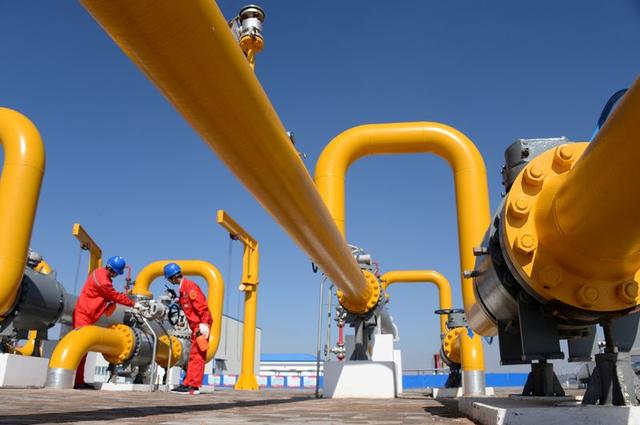LONDON- China has made significant progress building a gas distribution network to supply residents in major urban centres, helping provide cleaner and more convenient energy for heating and cooking while reducing air pollution.

Source: Reuters
But burgeoning consumption has not been matched by a similar increase in domestic production, leaving the country ever more reliant on imports, which is becoming a growing threat to national security.
The number of urban residents with access to natural gas reached almost 370 million in 2018, the latest data available, up from 83 million in 2006, according to the National Bureau of Statistics.
The proportion of urban residents with some form of access to piped gas hit 44% in 2018, up from just 14% in 2006 (“China Statistical Yearbook”, 2007 and 2019).
In practice, the availability of gas is much higher in the largest cities and in the northern half of the country where winter heating demand is greatest.
(Chartbook: tmsnrt.rs/2Op5cRj)
In the four provincial-level megacities, access to gas ranges from 68% in subtropical Chongqing and 77% in Beijing to 84% in Shanghai and 96% in Tianjin.
The government has prioritised the development of the gas network in areas with the most intense winter heating demand.
By 2018, access for urban residents was above 50% in northern provinces such as Jilin and Shandong, as well as gas-producing areas such as Xinjiang and Sichuan, though still below 30% in the subtropical and tropical south.
Nonetheless, access increased in every province between 2006 and 2018, by between 5 percentage points in Beijing (where most households already had access) and as much as 48 points in Shanghai (where heating is less critical).
The number of urban residents with access increased at a compound average rate of 13% per year over the period – which explains why national gas consumption increased at a compound rate of 14% over the same interval.
POLLUTION AND SECURITY
By replacing solid fuel ovens and small, old and inefficient coal-based building and district heating systems, gas has helped cut urban air pollution.
Pollution has fallen in every one of the four megacities and 28 provincial capitals, based on measurements of the volume of small particles sampled from the air, in most cases by between 15% and 40% since 2006.
The expansion of the gas network is not the only reason for falling pollution; polluting industries have been relocated away from city centres and coal combustion boilers have been upgraded to more efficient models.
But the expansion of the gas distribution system has made a significant contribution to cleaner air in areas that do not depend on heavy energy-intensive industries such as iron, steel, cement and chemicals.
The principal drawback is that rising gas consumption has far outstripped the country’s ability to raise domestic gas production.
In 2006, China was essentially self-sufficient in gas, with production and consumption both running at around 58 billion cubic metres per year.
By 2018, production had increased to 160 billion cubic metres, but consumption had surged to 280 billion cubic metres, leaving the country relying on imports for more than 40% of its needs.
China sourced roughly a third of its imported gas in the form of LNG from Australia, which is closely aligned with the United States, the country’s major strategic competitor.
Slightly more gas was sourced in total by pipeline from Turkmenistan, Kazakhstan and Uzbekistan in Central Asia, according to BP (“Statistical Review of World Energy”, 2020).
The rest is sourced from a range of smaller suppliers, either as LNG (Qatar, Malaysia, Indonesia, Papua New Guinea and Russia) or pipeline gas (Myanmar and Russia).
The relatively concentrated sources of China’s gas imports, and increasing importance of gas to the country’s energy system, is a growing threat to national security.
Increasing reliance on imported gas also presents economic and reliability risks in the event prices spike or the country is unable to secure sufficient LNG cargoes and pipeline deliveries.
In the medium term, the country will need to increase domestic production, diversify its international suppliers, and increase capacity for both seasonal and strategic gas storage.
John Kemp is a Reuters market analyst. The views expressed are his own.

